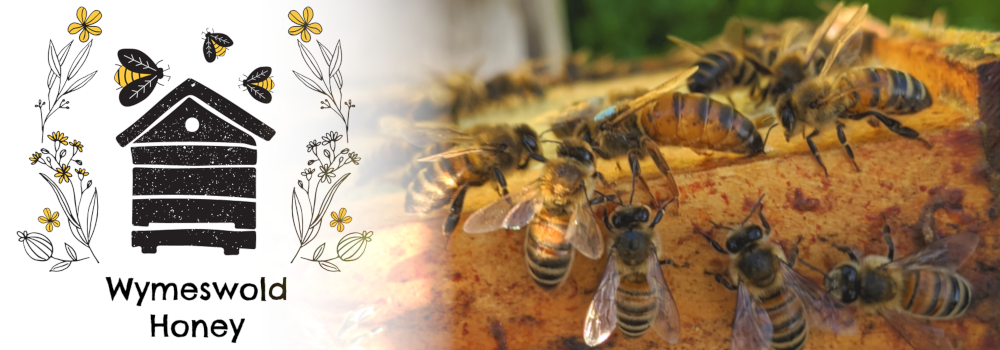Well, that (w/e 16/05) was a defining week!
Having placed a couple of bait hives, I had decided I might post a picture or two to explain a bit about this, and to mark the start of my quest for bees to populate the Warré.
So, what you see below is exactly that. Only as I didn’t have any spare floors (and if I had, they’d ideally need to be solid floors anyway; swarms are renowned for their distaste for bait hives with open mesh floors), I screened off the bottom of a Bailey board to fashion a “floor” of sorts. The small entrance on these is theoretically ideal, at least.
To this setup, I added the obligatory frame of smelly old brood comb, a dribble of lemongrass oil, plonked the whole thing in a spot at home, close to where we’ve had swarms land in the last couple of years (the other went into a location close to the main apiary), and crossed my fingers.
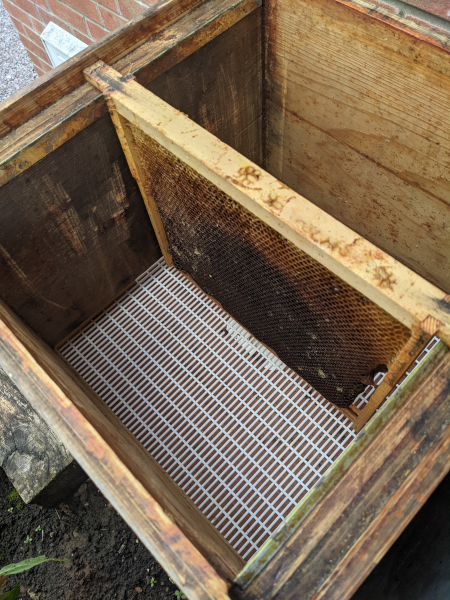 |
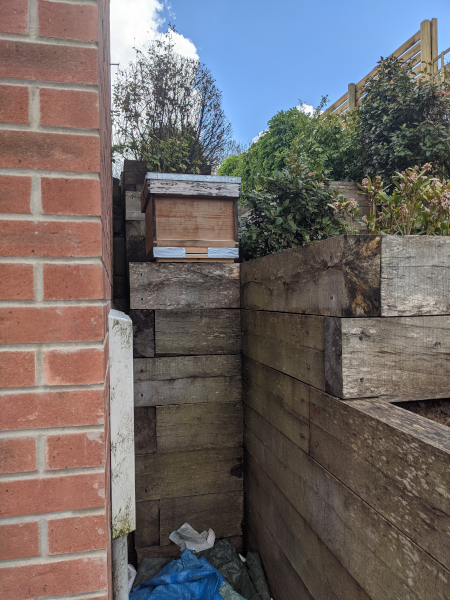 |
And, it worked!!! ... the finger crossing, that is - not the bait hives, which are still unoccupied - as, not 20 minutes after taking the above photos, I took a phone call from the guys at the fabulous Devol Kitchens, to tell me they had a honeybee swarm in their grounds. Serendipity indeed.
I therefore hurriedly grabbed some kit, chucked it into the car and drove down to take a look… and, well, as you’ll see below, it was a beauty; almost certainly a prime swarm, and at a height of about 6ft, on some small branches. The bees were docile to the point of being lethargic, and I got the impression this swarm had been caught out in-transit by the heavy showers which had occurred during the afternoon, and was not going anywhere in a hurry.
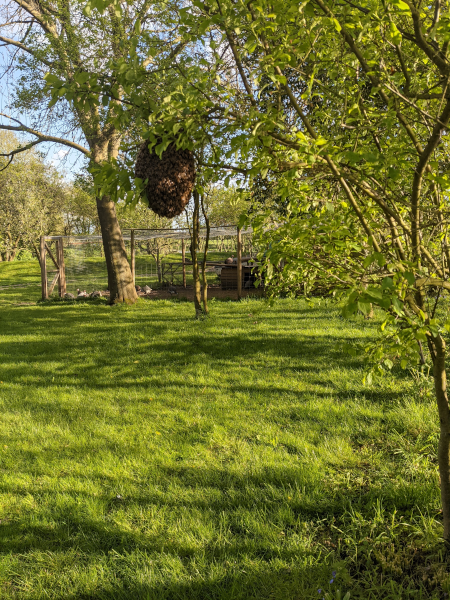 |
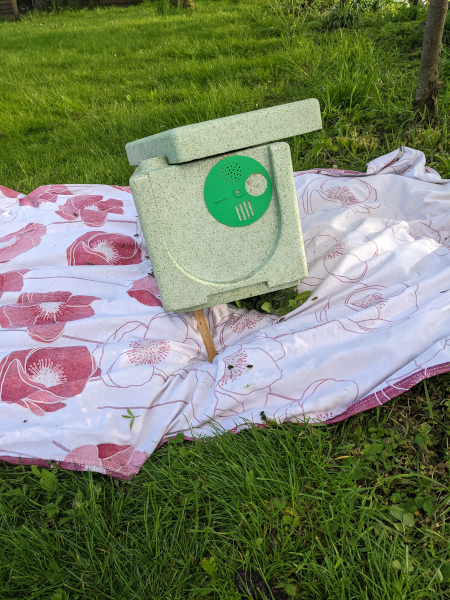 |
| “If Carlsberg made swarm captures …” | |
Having returned at dusk to collect the box, my thoughts then turned to getting the bees into the Warré the next morning. The first thing was to ensure I had primed the top bars with some fresh beeswax before turning in for the night, so (in the absence of a more elegant plan) I broke all the safety rules, banged the oven up to 75° (beeswax melts at about 64°), melted some of my cappings wax from last year in a roasting tray, and quickly dipped the top bars - à la...
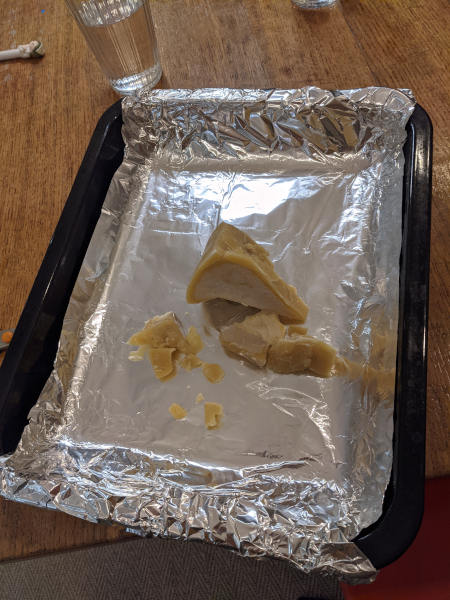 |
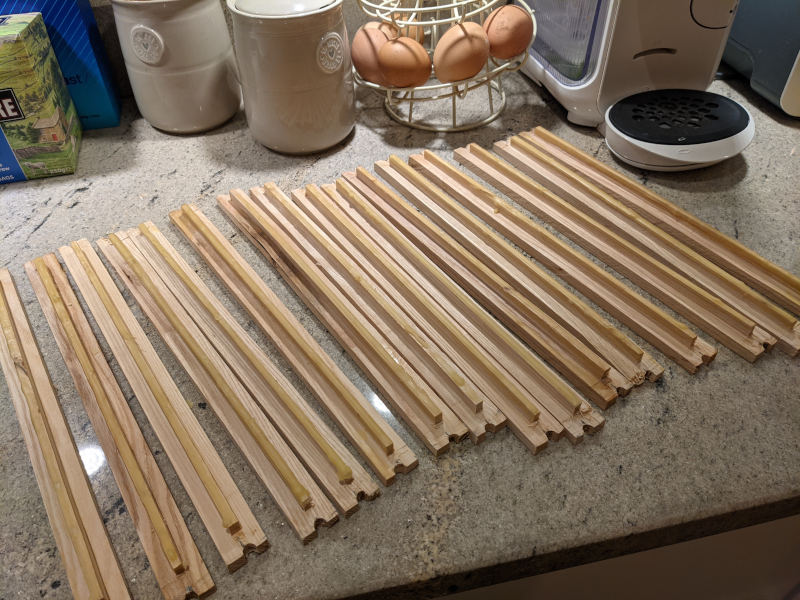 |
The following morning brought the main event.
Now, I have hived a good few swarms over recent years, and my ‘tekkers’, such as it is, is to simply dump the bees into their new home. Although this is somewhat crude, it has never failed me. However, in the spirit of the Warré being an adventure into uncharted waters, and into a gentler approach to beekeeping, I decided instead to try and “walk them in.” There are videos of this all over the internet, and it is quite a spectacle.
The premise is that, having been shaken out onto a sheet, sloping up to the entrance of the hive, the bees - who naturally walk upwards - will march-on up to the entrance, and into the inviting dark space with which they are greeted. Simples.
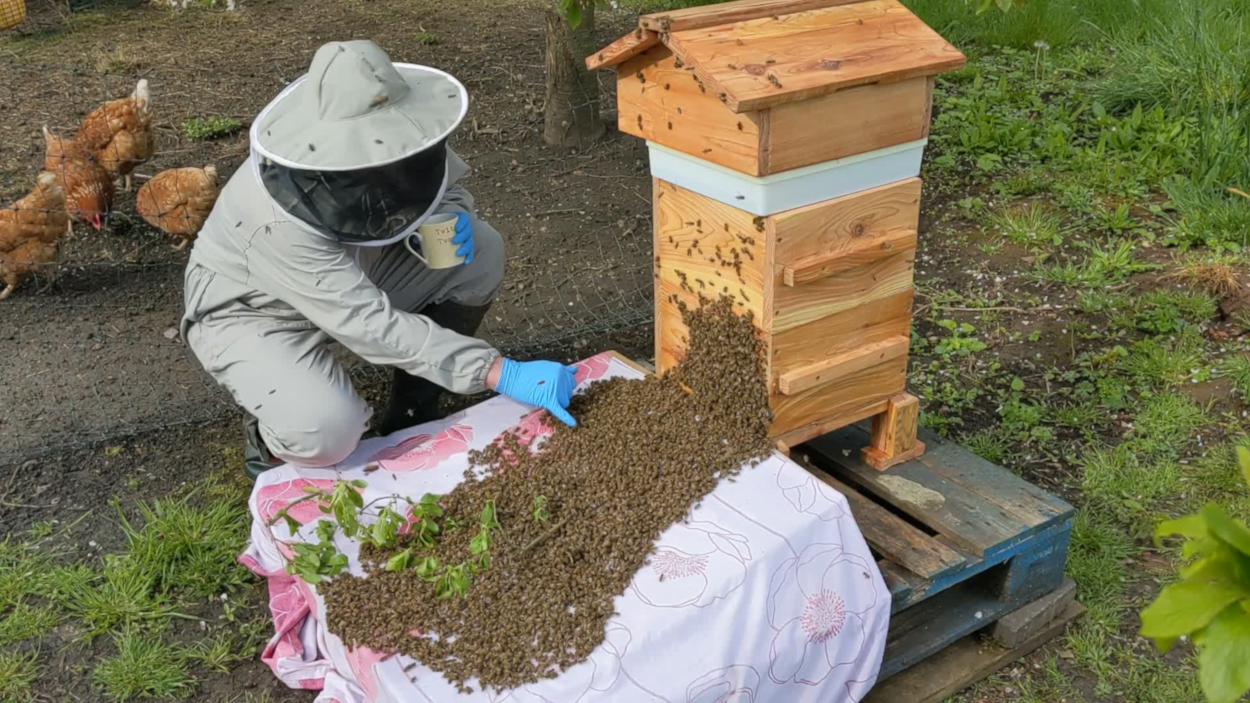 |
| walking in the swarm |
In for a penny, in for a pound, and the picture above shows me gleefully watching Her Majesty striding through the throng, and ultimately into the hive entrance. RESULT!!! She, incidentally, is a black stunner - and I shall hopefully be able to share a picture or two of her at a later point. With any luck, she’s AMM to the core.
At that point, and with much fanning in evidence at the entrance, I left them alone for a while, to finish their migration into the hive - not least as it’s a tad tricky to drink a mug of coffee with a veil on ![]()
Caffeine cravings satisfied, I returned after 15 minutes to check on progress, only to find …. Aaaargh!!!!!!! - see below … Well, we all know that bees don’t read the books.
I suspect that, had the hive contained drawn comb, they would have decided to stay put, but, in the absence of this, it seems like the Queen had decided to leave the box, and all the bees were assembled high up on the outside of the hive. Hmmmm.
Suffice to say: 1) I’ll probably not be trying to walk bees into a hive again, and 2) I quickly resorted to the tried and tested technique of dumping them into the hive, having first swept them back into the nuc; though, had I thought laterally, I might equally have tried to open up a gap at the top of the hive, and they may have entered there of their own accord. In any event, a number of lessons were learned here, but at least that got the job done.
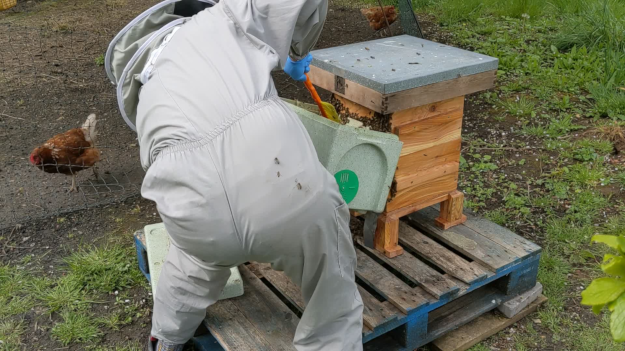 |
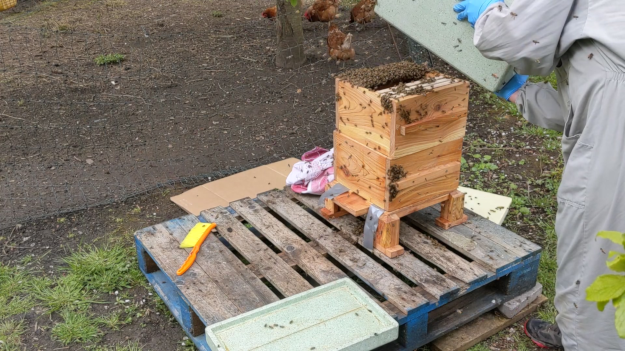 |
Incidentally, you’ll see, from the pictures above, that I started this setup with an English feeder sitting directly over the top bars. Eventually, I placed this atop a National crown board, enclosed in a super, with a National roof above … just as a temporary measure, and really to give the bees access to some food, for the first day or two - in order to both encourage them to stay, and, of course, draw fresh comb.
The rest - in the absence of any other barrier to exit - was then in the lap of the gods, and the waiting game began.
Roll forward 4 days …
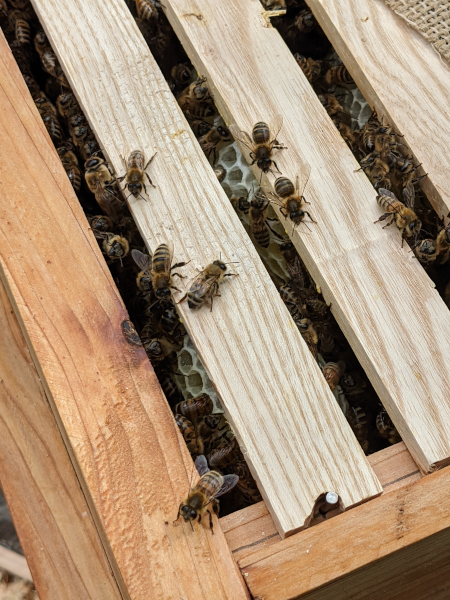 |
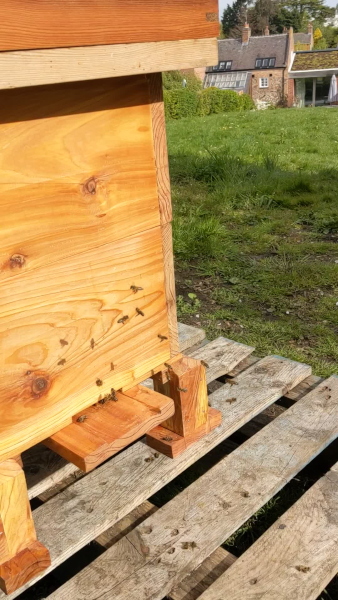 |
... and it looks like we have a confirmed success; the bees seem to have decided to call this ‘Home’:
The fresh comb, being fragile, could be compromised by trying to lift the frames at this point, so the plan for now is to leave the colony well alone, to establish. The feeder has come off, and we’ve installed the cover cloth and quilt, as below. The roof is now on … and the adventure really begins.
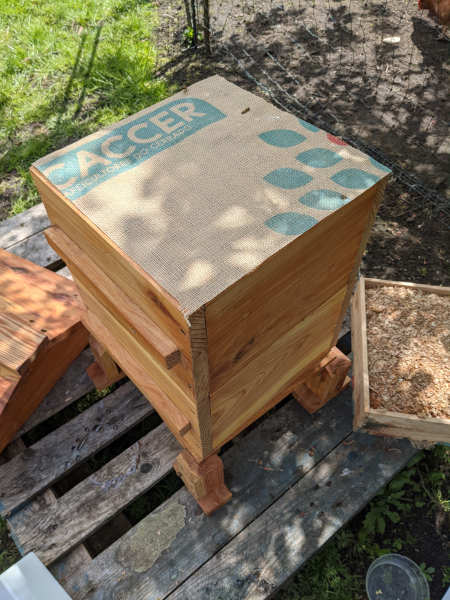 |
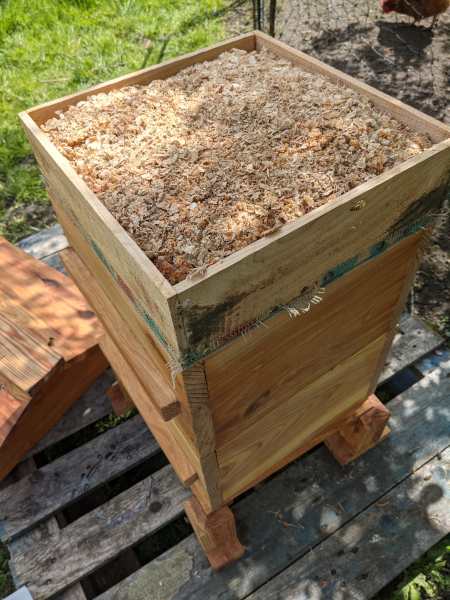 |
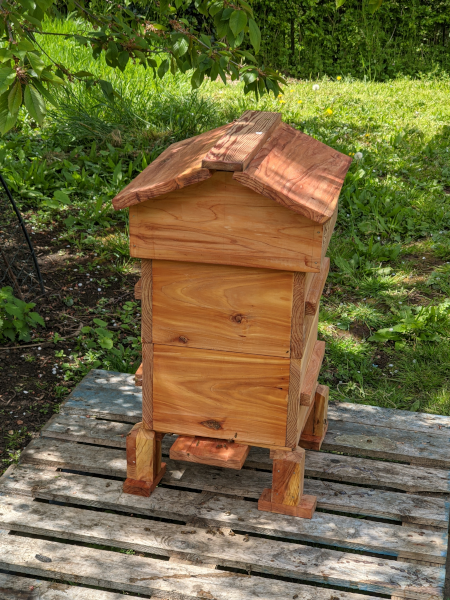 |
| cover cloth on | quilt on | roof on |
Very soon, of course, we’ll be needing to keep an eye on the comb-drawing, in order to pre-empt the colony running out of space, and to “under-super” (a paradox, if ever there was one) in a timely fashion.
In the absence of observation windows, I have a cunning plan here, which should avoid me having to open the hive to do these checks. Better still, it’s going to involve some technology ![]()
Curious ?! I hope so … in which case, please keep an eye out for the next installment.
